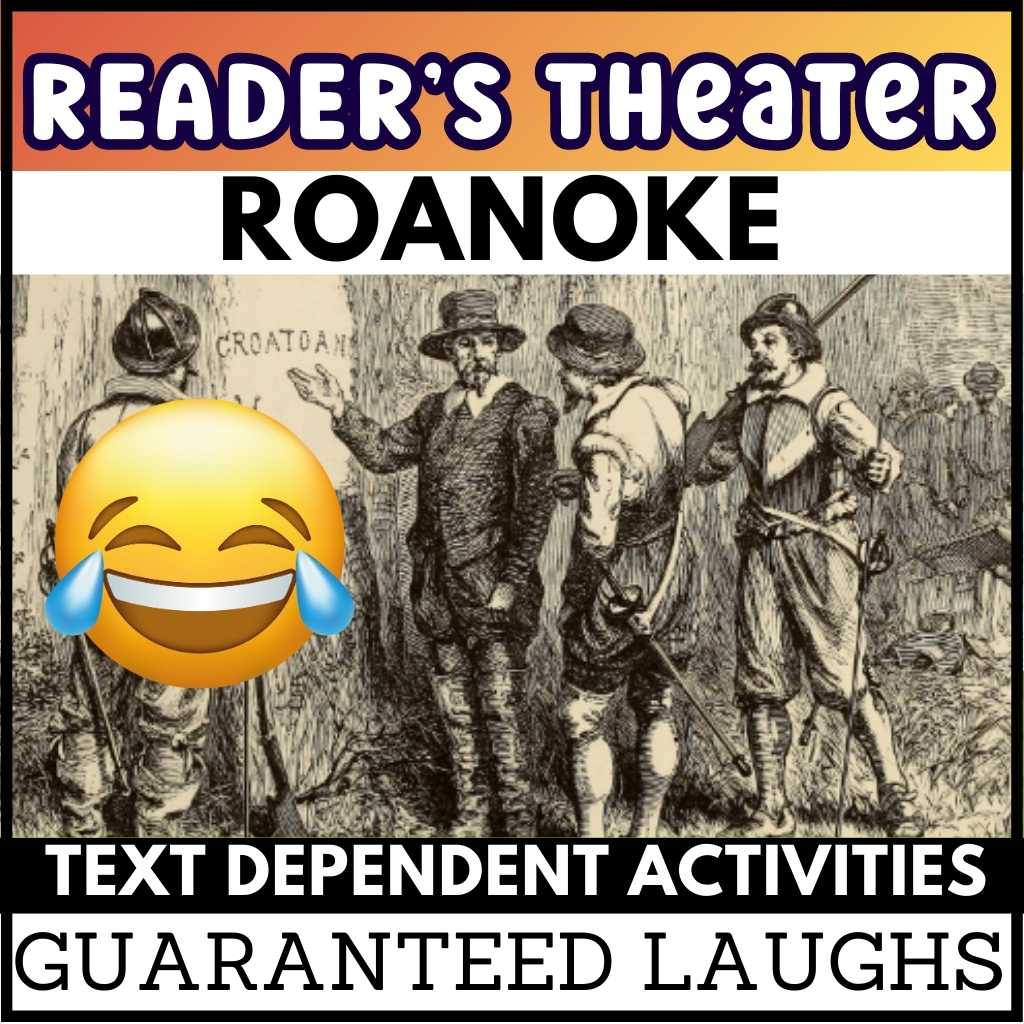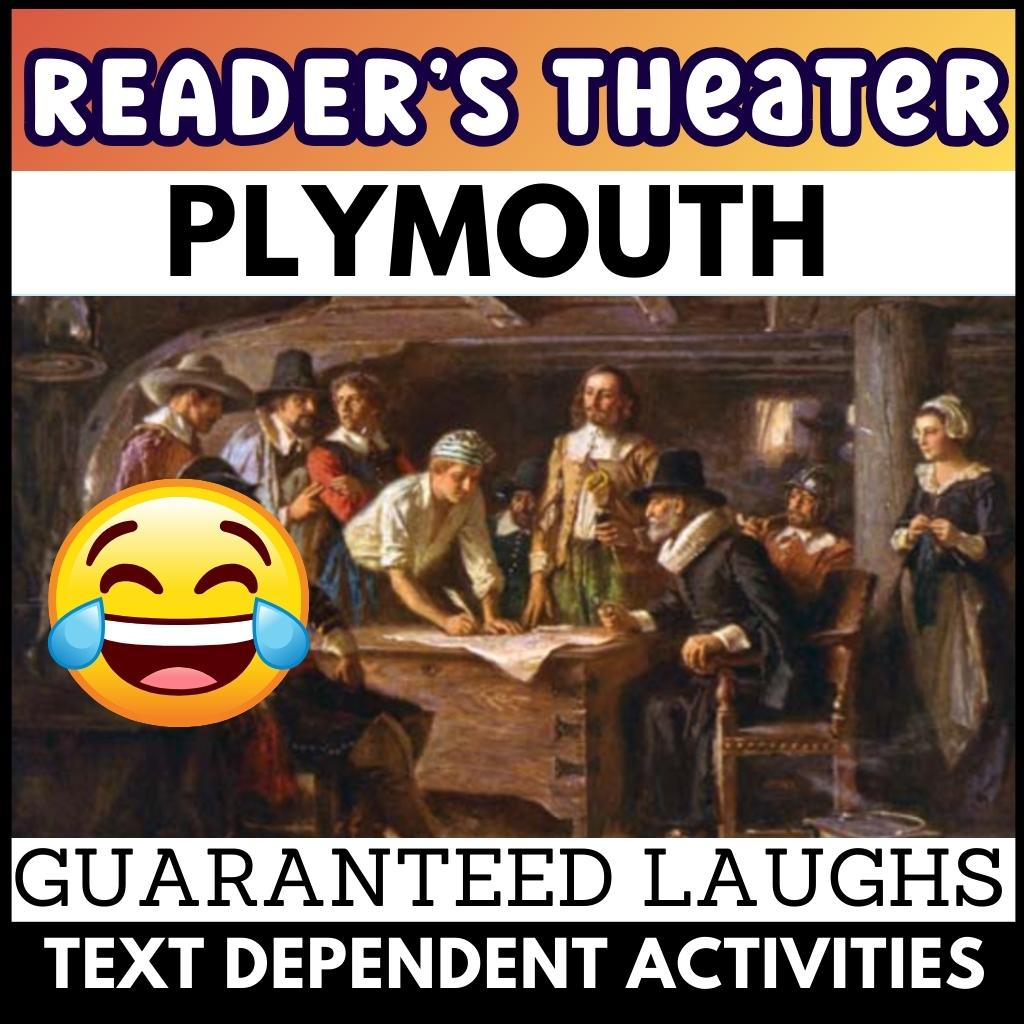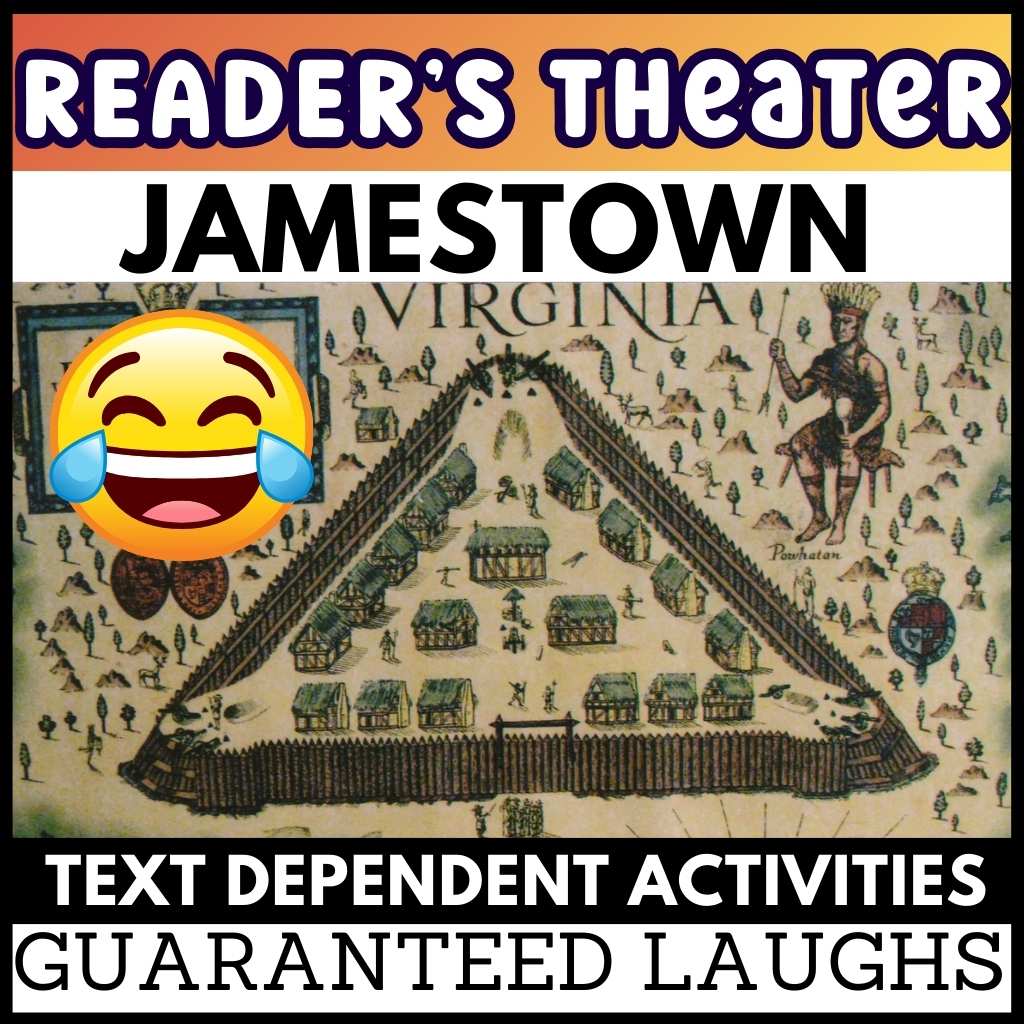Does this sound familiar? It’s Sunday night, and before you settle down on your sofa to watch something on Netflix, you have the dreaded feeling of knowing you have to finish your lesson plans for the week.
You’re teaching your students about the 13 Colonies, but you need to start with the early English settlements, and you have nothing to teach them. Nada! No fun worksheets, no cool activities. Nothing!
I get! I’ve been in your shoes plenty of times. Having students read from the textbook is not an option, especially when the textbook is too hard for your students to understand. So, how the heck are you going to teach Early Colonial Settlements? You want to make your lessons fun and engaging, but you don’t want to spend hours trying to figure out something new to try.
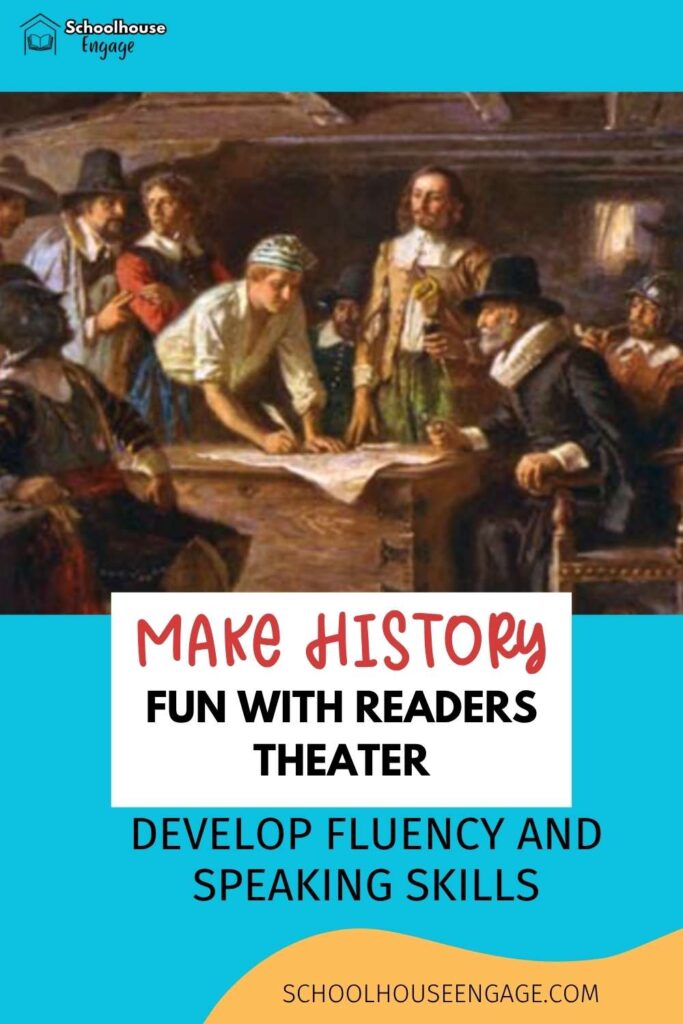
So, how do you plan lessons that are easy for you to prepare and get your students excited about learning about these early settlements? My go-to resource is Reader’s Theater.
In this post, I’ll share how I use Reader’s Theater to teach Early Colonial Settlements, boost student engagement, and develop key reading skills—all while having fun.
Early Colonial Settlements Every 5th Grader Should Know: Roanoke, Plymouth, and Jamestown
Before you start teaching your students about the 13 colonies, it’s important to educate them about the early English settlements. The ones I focus on are Roanoke, Plymouth, and Jamestown. I know that there are more, but these are the main ones that I think all 5th-grade students should know about.
How to Integrate Reader’s Theater into Your Social Studies Curriculum.
1. Provide Background Knowledge
Before you hand your students the script for a Readers Theater skit, you need to teach them about the historical event they will perform. Here’s what I do beforehand.
I start with a Google Slides Presentation filled with a lot of pictures that help students make connections with history. I hold my students accountable for listening to the presentation with guided notes. Students complete guided notes while I present, which they keep as a reference for later activities. Read my blog post about how to create guided notes.
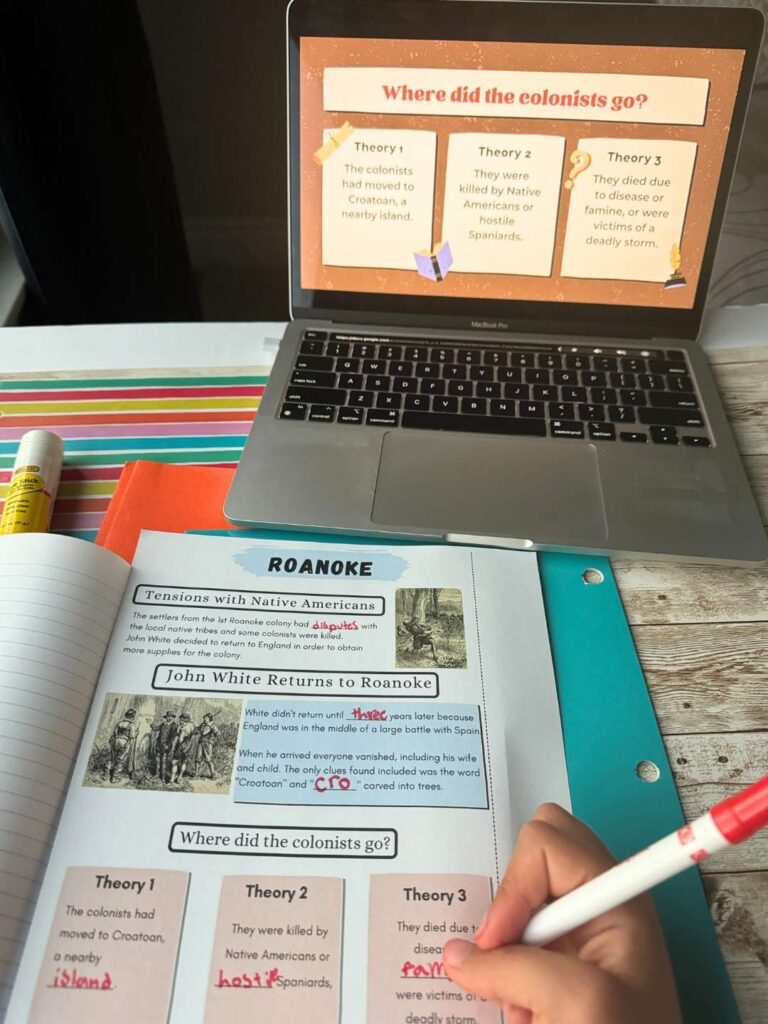
2. Frontload Domain-Specific Vocabulary
Students write down key vocabulary terms they need to know to understand the script or any reading passage about the topic. The guided notes I use include vocabulary that is presented with images and kid-friendly definitions. You can find guided notes for the 13 colonies HERE.
3. Show Videos About the Early Settlements and the 13 Colonies
Showing students short video clips of early settlements is a must! Students love watching videos. We turn off the lights in my classroom to add to the dramatic effect. It also gives you and the class a change of pace with some quiet time.
Be sure to turn on closed captions for your students. They will be able to catch every word and see the vocabulary words they are learning written out. This is especially important for your EL students.
Some of my favorite videos are:
- The Lost Colony of Roanoke (COLOSSAL MYSTERIES)
- Jamestwon Settlement (KIDS ACADEMY)
- Deconstructing History: Mayflower(HISTORY)
- Plymouth Colony Facts (HISTORY HEROES)
Align Historical Readers Theater in Chronological Order
It may seem like common sense, but it’s important to align early colonial Readers Theater skits in chronological order.
Here is the order in which I teach my students about the early English Settlements and the 13 Colonies:
- Roanoke – The mysterious lost colony.
- Plymouth – The Pilgrims’ journey and the Mayflower Compact.
- Jamestown – The first permanent English settlement in America.
Preparing Students for Reader’s Theater
Reading in Scripts in Small Groups
The Reader’s Theater skits I use with my students usually have between 2-5 characters. The reason for this is that students are more engaged when they are reading the script in a small group.
Often, Readers Theater can be boring, and students lose interest because there are too many characters. If a student only has a few lines to read, what incentive do they have to pay attention? This is why reading scripts in a small group is the best way to keep student engagement.
You can either call up students to a small group to read the script or divide them up into small groups and have the whole class read it at once. When I do the latter, my students will sit on the floor in a small circle or huddle up together while standing.
Steps for Success
- Silent Reading – Students first read the script to themselves and think about which character they want to play. This gives them an incentive to read the script for understanding and purpose.
- Whole Class Reading – I then read the script aloud, modeling how to use tone and expression.
- Group Practice – Students break into small groups to practice their lines. I circulate, offering tips on hand gestures and how students can change their tone.
Once students have practiced their lines several times, it is time to perform.
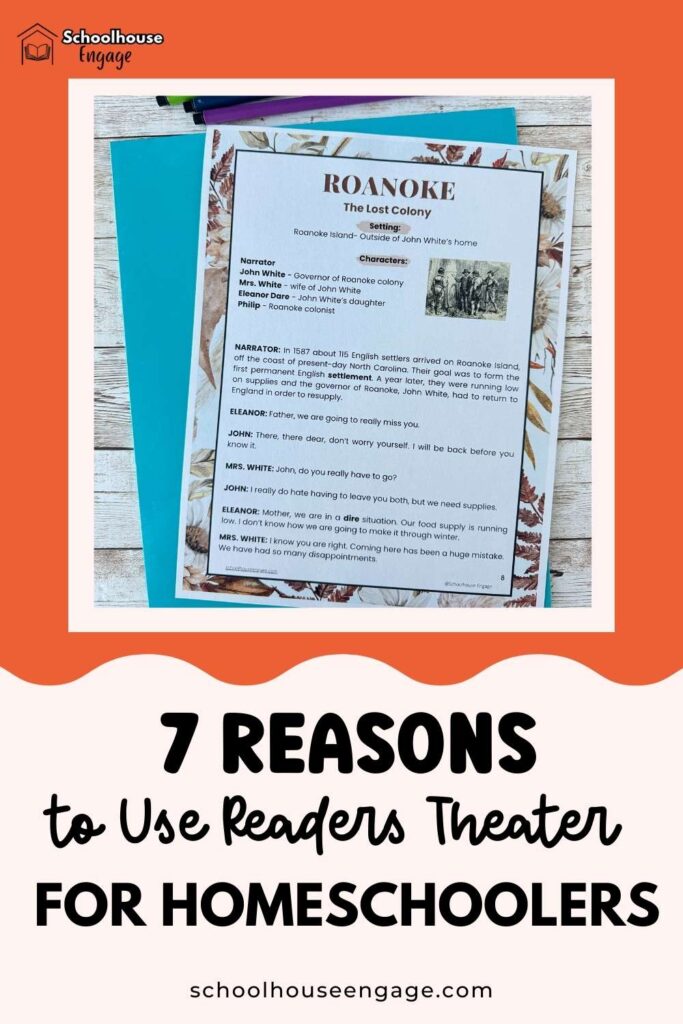
Tips for Organizing and Directing Student Performances
Managing and directing student performances effectively doesn’t take a lot of work when there is a small number of characters. When students are done practicing their lines, a group will perform.
My students stand up in front of the class and perform. I have a large View Board, so I will pull up an image of the setting so they have it in the background.
Creating a Supportive Performance Environment
To create a supportive atmosphere for student performers, I ask my other students not to interrupt or laugh if a student has made a mistake. They are to keep quiet during the performance and clap afterward. I tell them that these are guidelines for all audiences of any performance.
Fitting Skit Performances in Your Lessons
There is no way each group can perform for the classroom. Ain’t nobody got time for that! If you have never used Reader’s Theater in your classroom, you’ll find that students may be timid at first to perform. However, once they get accustomed to it, you’ll have everyone wanting to perform.
If that’s the case, randomly choose a group. You may also want to ask your admin or parents to come in for a performance, or send your students to another classroom that is studying the early settlements and the 13 colonies.
If I’m limited on time, students will read the script in small groups, but we won’t perform at all. It really depends on how the day is going.
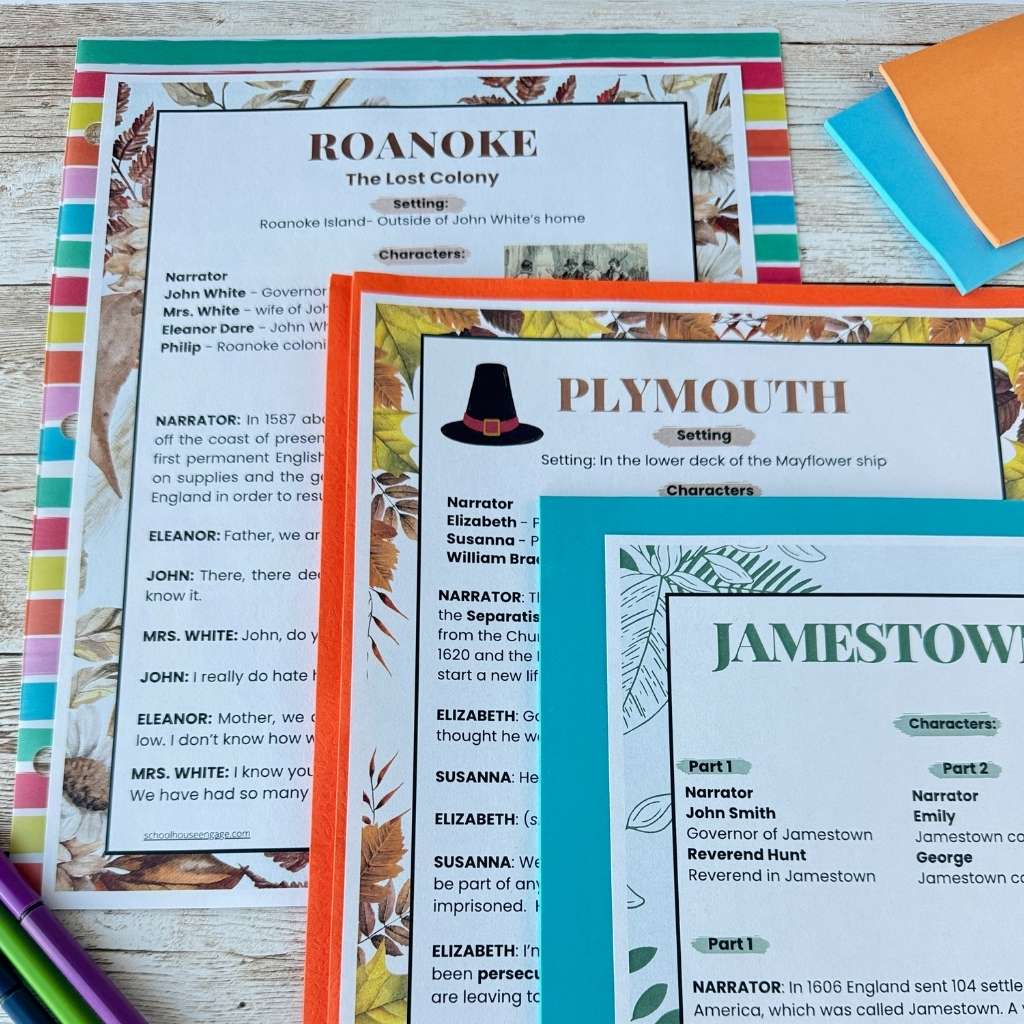
Spotlight on Skits: Teaching the 13 Colonies
The Lost Colony of Roanoke
Your students will love acting out the mystery of John White’s return to Roanoke, only to find the settlement deserted, with “CRO” etched into a tree—a mystery that remains unsolved to this day.
Jamestown and the Virginia Company
This skit covers John Smith’s leadership, the harsh winter of the “starving time,” and John Rolfe’s introduction of tobacco, which ultimately saved the colony. I make sure to do this project before my students create their Jamestown Paper model. You can read my blog post about creating the Jamestown model in groups, HERE.
Plymouth and the Mayflower Compact
Set aboard the Mayflower, this skit follows Susanna and Elizabeth as they discuss religious persecution, their father’s imprisonment, and their frustration at being excluded from signing the Mayflower Compact.
If you would like an idea of what you get in my Reader Theater Skit and Comprehension Activities, download my FREE Causes of the American Revolution Stamp Act skit. It has always been a hit with my students. Get your FREE skit below.
Final Thoughts
Building oral fluency and helping students understand historical events in context are just some of the benefits of using Reader’s Theater skits to teach early colonial history. I encourage you to try using these 13 Colonies Readers Theater skits in your own classrooms to make history fun and engaging. You got this! Giselle
Click the image below and save this post on your teacher’s Pinterest Board.📌📌📌
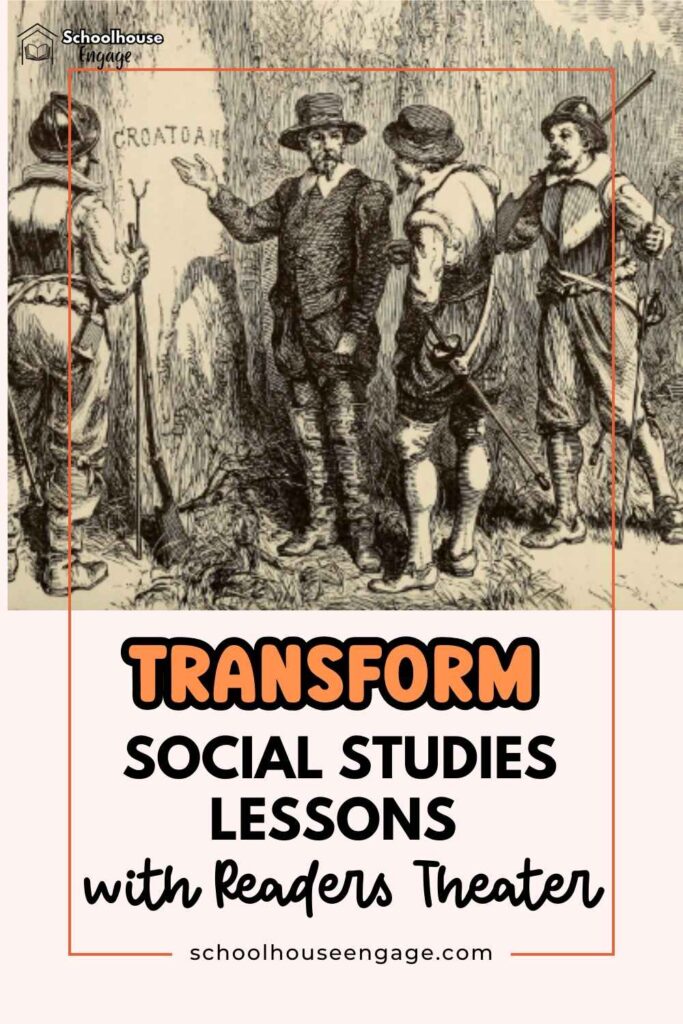
For more blog posts about the Early Settlements and the 13 Colonies, check out:

